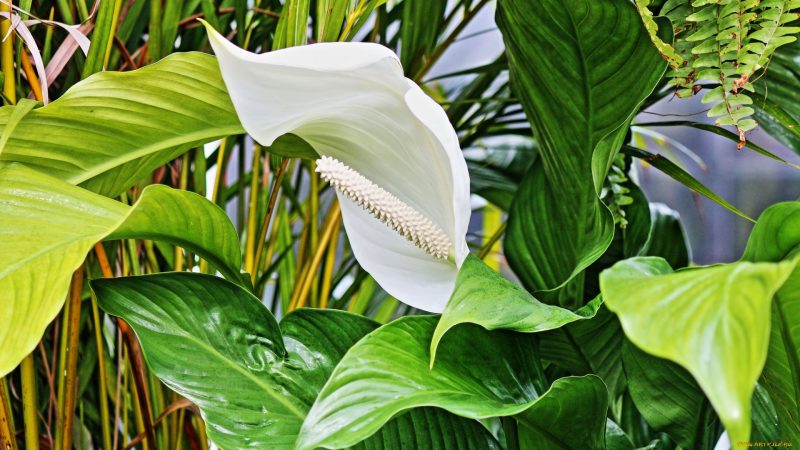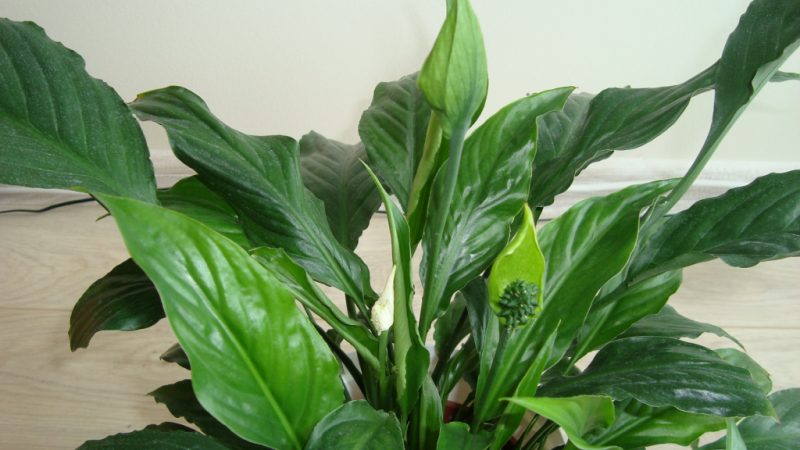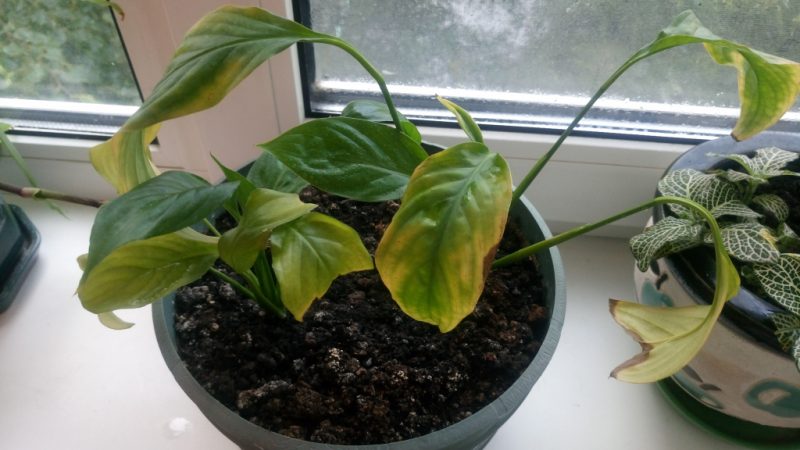Perennial pottery culture from the tropical forests of South America and Central Asia has long won the hearts of flower growers, taking its rightful place among indoor flowers. A spectacular stemless plant with a rosette of glossy leaves, popularly known as “female happiness”, is distinguished by its decorative appearance and non-capricious character. However, despite all its unpretentiousness, for the successful cultivation of a representative of the tropics, one should study in advance questions regarding when the spathiphyllum transplant is most appropriate, and what conditions of detention will be optimal for the flower.
Material Content:
Growing Features

After the purchase, when the spathiphyllum has entered a new habitat, it is necessary to provide the appropriate microclimate for the plant:
- Lighting. The flower can grow even in the back of the room, but the greatest decorativeness can be achieved by placing the culture on window sills near the eastern and western windows without direct sunlight.
- Temperature. During the active vegetation period, the flower feels comfortable at temperature values in the range of 20 - 22 ° C, which with the advent of winter can decrease by 4 ° C. The critical minimum is 16 ° C.
- Humidity. To keep the conditions as close to natural as possible, it is necessary to spray the spathiphyllum daily, which will create the required level of air humidity. In the absence of time, you can place a container of water near the pot.
Care for spathiphyllum at home
Caring for a tropical flower is quite simple: you need to regularly conduct only a few simple events.

- Watering.Spathiphyllum sharply reacts to systematic waterlogging of the soil, therefore, when organizing the irrigation regime, the measure should be observed - water the flower abundantly only after the earthen coma is dried. With the advent of winter, water volumes and the frequency of humidification are reduced.
- Top dressing. During the growing season, to ensure prolonged flowering, spathiphyllum is fed twice a month. As nutrient complexes, fertilizers are used for flowering plants, including all the necessary macronutrients.
- Protection against diseases and pests. Flower shoots are sometimes damaged by thrips, mealybug, aphids and spider mites. To control pests, insecticide treatment is carried out according to the manufacturer's instructions. Among the diseases, gray rot is most often observed, caused by a constant excess of soil moisture. In the early stages, the development of the disease can be stopped with the help of fungicide and the normalization of the irrigation regime.
Transplanting and propagating a flower
The first transplantation of spathiphyllum at home is carried out after quarantine lasts 2 to 3 weeks after acquiring the culture.
Wherein:
- A permanent pot of a slightly larger size is prepared in comparison with the shipping container.
- A drainage layer is placed at the bottom.
- A loose, fertile soil mixture is prepared from turf, leafy soil, peat and sand in a ratio of 2: 1: 1: 1.
- Together with an earthen lump, which was previously moistened for ease of extraction, the spathiphyllum is transferred from the old tank.
- The free space is filled with a prepared substrate.
In the future, it is enough to transplant a young flower every spring after the completion of the stagnation stage, choosing a container of a slightly larger diameter. Adult specimens are planted in a new substrate with an interval of 3 to 4 years.
The indoor flower propagates by separating the children during the transplant, when the lateral processes with roots are separated from the maternal specimen and planted in small pots with prepared substrate for adult plants.
Spathiphyllum leaves turn yellow and black - causes and treatment

Sometimes after a transplant, when the plant is in a depressed state, the following difficulties arise:
- After transplantation, Spathiphyllum lowered the leaves - what should I do? The causes of the problem often lie in too dry soil or air. Regular watering and increasing the level of humidity will help to correct the situation.
- The flower's leaves turn black. Due to excess moisture, the root system could be affected by rot, which can be helped by planting spathiphyllum in a new substrate with the preliminary removal of all diseased roots and disinfection in a fungicide solution. After transplanting in the winter, darkening of the ends of the leaves can also be observed, which is associated with a low level of humidity due to the operation of heating devices.
- The foliage turns yellow. Among the factors leading to the appearance of yellow spots on the leaf plates, there are soil and air droughts, the presence of a flower under direct sunlight, and an improperly selected substrate.
More materials:leaves of spathiphyllum turn yellow
Why wilted flower "Women's happiness"

When transplanting, it is necessary to follow the basic rules so as not to encounter the problem of wilting of a representative of the tropical floraThe main reasons for which are:
- Wrong time. Spathiphyllum should not be transplanted during the flowering period, when the plant is very painfully experiencing a change in capacity and substrate.
- Transplant too frequent. A young flower is transplanted no more than 1 time per year. A change of soil for an adult plant is carried out after 3 to 4 years.
- Unsuitable soil. Planting in acidic, heavy soil with poor drainage qualities can cause wilting and even death of the flower.
So, in order for the undemanding spathiphyllum, which is very popular among flower growers, to please its beauty for many years, it is necessary to correctly approach the issues of care and transplantation of this spectacular flower.
It is interesting:nematanthus at home













